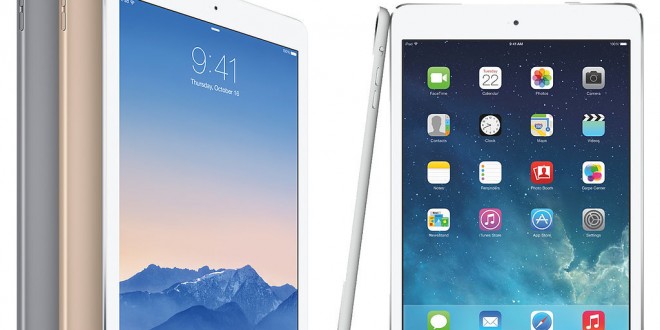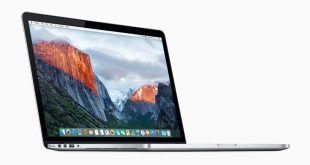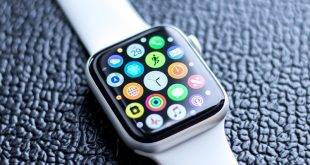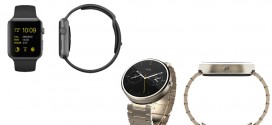Apple has just launched the iPad Air 2, the successor of the original iPad Air last month. Apple’s focus with the iPad Air 2 was to change the design and make it even thinner and lighter than its predecessor, as well as offer increased functionality and practicality. With the release of iOS 8 and OS X Yosemite, Apple has created a great environment for the iPad Air 2 as well as other new and old products from the company. In this comparison, we will try to show you what kind of upgrades the iPad Air 2 brings to its predecessor, the iPad Air and whether an upgrade would be worthwhile or not.
While many skeptics say that the iPad Air 2 launch was disappointing, that was because the iPad Mini 3 brought almost no improvements to its predecessor and the iPad Air 2 isn’t that much different from the original iteration of a light, thin tablet from Apple. Even so, the differences are there, and not just reflected by the price tag on the iPad Air 2. First off, the design of the iPad Air 2 has changed a bit, but only in weight and thinness. Another elements which wasn’t on the original iPad Air is TouchID, which Apple proudly introduced on both the iPad Air 2 and iPad Mini 3 as well. While many say that TouchID on the iPad Air 2 wasn’t such a necessary feature, it still feels good to have the extra bit of security on-hand.
Apple already has 56 iPad models that you can choose from, the iPad Air and the iPad Air 2 being among the most popular ones as of yet. At the same time, it makes you wonder whether it is worth spending a lot of money on the newer model if you can get the same experience with the older iPad Air or even older iPad releases. The biggest difference between the previous iPads and the iPad Air 2 is that the iPad Air 2 comes with an extra storage configuration. You can buy the 128 GB iPad Air 2 for $700 if you are content with having Wi-Fi only, or you can muster up $830 if you want Wi-Fi and LTE.
The iPad Air 2 has the same screen its predecessor had, namely a 9.7 inch Retina LED-backlit display with a 2048 x 1536 resolution amounting to 265 ppi pixel density. Worth mentioning about the display is that compared to the iPad Air, the new iPad Air 2 has a fully laminated display which allows for a thinner design and great outdoor visibility. Its antireflective coating contributes to that and adds more to viewing angles, which are great with the iPad Air 2. If I were to choose from all the tablets I’ve tried based on outdoor visibility and viewing angles, Apple’s latest slate would be my choice. But I usually don’t choose based on that, so let’s go on with our comparison. The iPad Air measures 240 x 169.5 x 7.5 mm, while the iPad Air 2 measures 240 x 169.5 x 6.1 mm. The Wi-Fi only version of the iPad Air weighs 469 g, the Wi-Fi + cellular version weighs 478 g, while its successor’s Wi-Fi model weighs 437 g and the Wi-Fi + cellular model weighs 444 g.
We’ve established that the design and display are just a bit different when comparing the two slates, but what about performance and battery life? Let’s see. The iPad Air runs on Apple’s own A7 chip with 64 bit architecture and M7 motion coprocessor. We’ve seen impressive performance on its part and most users were more than happy with that. The iPad Air 2, on the other hand, runs on the brand new 64 bit A8X CPU with the M8 motion coprocessor. While we don’t have as much info on performance as we’d like, we can still say that the difference between the two is not mind-blowing, but it’s there. Unless you run high-intensity apps and games on a regular basis, the upgraded CPU won’t make much of a difference. The iPad Air 2 also has 2 GB RAM, which is more than the 1 GB RAM its predecessor has.
If you were hoping to see a better camera on the new iPad Air 2, your hopes can disperse now. Apple decided that the HD FaceTime camera on the front should remain the same 1.2 MP sensor capable of 720 p resolution. But when it comes to the rear iSight camera, you should be happy to know that Apple upgraded the iPad Air 2 with an 8 MP sensor, which is a boost compared to the 5 MP iSight camera on the iPad Air. Apple also added a new Burst mode to the rear camera, which helps in case you want to take multiple or sports shots. The company also added slow-mo video recording, which works quite nice on the new slate and will surely come in handy.
And that would be all there is to it. Connectivity-wise, nothing has been changed, the same Bluetooth 4.0, Wi-Fi, MIMO and LTE are present on both Apple’s slates. The battery life hasn’t changed either, although Apple isn’t clear on what kind of battery the iPad Air 2 uses. Nonetheless, we do know the iPad Air 2 has a built-in 27.3-watt-hour rechargeable lithium-polymer battery, which should make for an average 10 hour battery life, according to Apple. Tests showed that the iPad Air 2 battery life stays somewhere between 7 and 8 hours, which is more or less the same as its predecessor. Even so, we should keep in mind that battery life depends on the user very much – how you use the slate and how you take care of it. The best course for maximizing battery life is always completely depleting in and fully charging the device without interruption. That’s the easiest step. You can always deactivate functions or tone down brightness.
Last, but not least, let’s talk about price. The iPad Air 2 has six different prices, based on storage configuration and connectivity. The base model with Wi-Fi only and 16 GB storage will set you back $500, the 64 GB Wi-Fi model price is $600 and the 128 GB Wi-Fi model costs $700. If you want Wi-Fi and LTE, you will have to pay $629 for the 16 GB model, $729 for the 64 GB model and $829 for the 128 GB model. The iPad Air has only two storage options available, so you have four prices to choose from. The 16 GB Wi-Fi only model is $400, the 32 GB model is $450, while the Wi-Fi + cellular models cost $529 for the 16 GB storage configuration and $579 for the 32 GB storage configuration.
Since this comparison turned out to be pretty short, we surely have to conclude something. Even though the iPad Air 2 brings some improvements to its predecessor, spending more money on it might not be worth it. That’s in case you already own an iPad Air. If you are planning to upgrade from an Android tablet, then it might be worth your money, because Apple slates tend to have a longer shelf life than Android ones. At the same time, you should consider OS, because iOS 8 locks you into Apple’s ecosystem, but it does bring new and useful features compared to iOS 7. In any case, the iPad Air 2 wouldn’t be a bad choice for a tablet, having great performance and a great display, but its cheaper predecessor might suffice for most of you.
 Load the Game Video Games, Reviews, Game News, Game Reviews & Game Video Trailers
Load the Game Video Games, Reviews, Game News, Game Reviews & Game Video Trailers



